HISTORY OF THE SCHOOLS OF TOBYHANNA TOWNSHIP
with contributions from Gene Kerrick
February 4, 2013
The First School
The first school established for Tobyhanna Township was located near Soxville. This schoolhouse was a small building constructed of logs in 1831. Miss Sarah Winters was the first teacher.
Soxville is known to have been located along today’s Route 115 where it intersects the Tobyhanna Creek, just south of Blakeslee. In 1800 George Sox settled here from New Jersey, and built a hotel and tavern. A community grew of approximately 10 homes, and with the surrounding area the need for the school arose. The school was built at a central location for residents in the western section of the township, at what is known today as the village of Blakeslee.
In 1834 the Pennsylvania state legislature passed a new school law that issued forth standards and requirements for the education of the youth of the Commonwealth. This also had the effect of hastening the construction of more school buildings. Until then many perspective students did not attend school due to the great distances necessary to travel each day.
Since 1840 the voting residents of the township have elected school directors. Most commonly, there were two directors elected each year. It is unknown if their terms during the 19th century were for more than one year, and if so, how many directors served at a time.
After Tobyhanna Township was divided in 1856, there were four schools serving the residents of the township. These were located in Middletown, Blakeslee, Locust Ridge and Pocono Lake (Tomkinsville, later the Pocono Pines area.)
Little is known of our schools during the 1800s. However, maps of the 1860-1880 period show schools to be located in the close vicinity, if not same locations, of the eventual four school locations reported here for the beginning of the 20th century.
Records do show that in 1860 there were four male teachers with an average salary of $15.00. Scholars included sixty males and sixty-seven females, with an average attendance of 114. Until the late 1800’s and through the turn of the century, the average school year was just a little more than four months.
The Four Schools of Tobyhanna Township
THE MIDDLETOWN SCHOOL, sometimes referred to as the Stoddartsville School, was located on what is now Thomas Road, earlier a part of the Wilkes-Barre-Easton Turnpike. It appears that students of higher grades from that school attended the Blakeslee School. According to a Monroe County school report, the “Stoddartsville School was closed” on or before 1911. Students from that area would then apparently attend the newly built Blakeslee School.
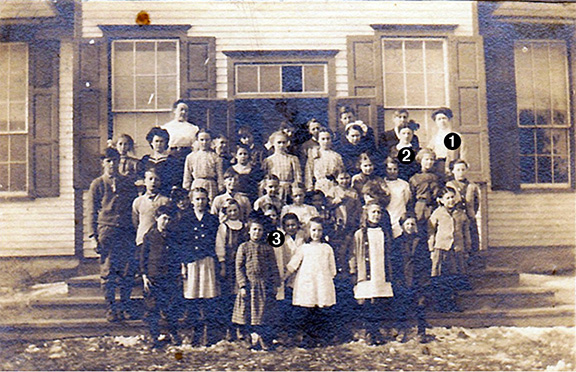
Standing to her left is sister Sarah (2); in second row, marked with (3) is her sister Melinda. (Contributed by Gene Kerrick)
THE BLAKESLEE SCHOOL was first located at the northwest quadrant of the intersection of Route 115 (then known as the Wilkes-Barre-Easton Turnpike) and Route 940 (earlier designated Route 15).
Although eventually known as the Blakeslee School, it may have been originally referred to as the school at Soxville since Blakeslee did not yet exist, and Soxville was the nearest village. It was built of logs in 1831. Historians for the Blakeslee United Methodist Church report that before their church was built, it met in the school, a log cabin, from 1840 to 1852. The site of the school is believed to be north of the present church site.
At some point in time the school apparently relocated to the northeast corner of the intersection. (Site of today’s PNC Bank.) Whether the new church built in 1852 displaced it, or if it moved to new quarters to accommodate growth of the community, is not known. This building was closed in 1911.

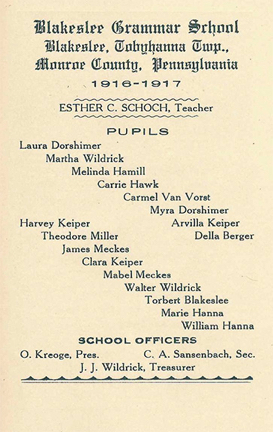
Six-Month Testimonial Award to Eugene Kerrick (age 9), October 5, 1894, by the Middletown School.
“For earnest and faithful study, punctual attendance and conduct deportment.”
Grades written on the back were: Arithmetic – 95%, Grammar – 75%, Geography – 85%, History – 80%,
Physiology – 78%, Spelling – 90%, Reading – 100% and Writing – 95%. (Contributed by Gene Kerrick)

TOP: The original log school, 1840-1852, just north of the present-day site of Blakeslee United Methodist Church.
SECOND: Moved to across street, present day PNC Bank site.
THIRD: Replaced first school on today’s PNC site, closed 1911.
BOTTOM: The last Blakeslee School, 1911-1931, next to (north) today’s U.S. Post Office.
In 1909, Robin Blakeslee gave land for a new school. This land was located across the street at the Northwest section of the crossroads in Blakeslee Corners. The new school was built on the site next to today’s post office (later site of the Catholic church), and consisted of two rooms.
Martha Hamill, mother of Ginnie Hamill Kerrick (Gene Kerrick’s wife) was a teacher at this school for a number of years, even teaching her own younger siblings at one point. Gene Kerrick’s father also attended this school, after first attending the Middletown School.
In 1931 the school was closed because the Pennsylvania State Department of Health refused to issue continuing permits for its rest rooms. The students were reassigned to the newly enlarged Pocono Lake School, with busing provided. Some time before the end of 1929 a bus heavily damaged the bridge over Pocono Lake, breaking though the bridge deck, causing the collapse of the bridge. This required the students to disembark the bus at that location, walk a wooden pathway and then board another bus.
On October 15, 1937 A.E. (Bert) Herrick, son-in-law of Isaac Stauffer, purchased the Blakeslee School for $1,525 for the Roman Catholic Church. That congregation worshiped in the building until it was replaced in 1979 with a new church facility.
THE LOCUST RIDGE SCHOOL is believed to have been built around 1900, or possibly a few years before. Robert Selig reports his understanding that this school, as well as the Pocono Lake School, were similar, if not identical, in design to the Blakeslee School. Photographs here certainly indicate support of that.
Mr. Bush, a teacher for the school, reported that the building had no well or running water, which necessitated carrying water to the school daily. The outhouse toilets were of the traditional design. Apparently there was a modernization plan in place for the school at some point. When the Seligs purchased the school in 1946, they found three ceramic toilets that were planned for installation in the outhouse. These ceramic toilets appear to be of modern design with internal plumbing — until the lid is lifted, revealing a hole through the ceramic bottom for access to the bowels of mother earth.

Shorter windows were installed to accommodate lowered ceilings for residential use, but the two windows beside the front entry are original.
The school bell sits in the front yard.
Other teachers for the Locust Ridge School were Elmer D. Borger (1902-1903) with 31 students, Albert L. Zacharias (1904-1905) and Dorothy N. Gearhart (years unknown) with 49 students.
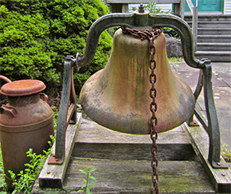
The Locust Ridge School was closed about the same time as the Blakeslee School, circa 1931. The Seligs purchased the property in 1946 for their home.
The bell-tower was dismantled, and internal remodeling was done to convert it to residential use. During World War II, the bell was used for air raid purposes, and could be heard for three miles.
It still projects a deafening volume if you are standing next to it when rung.

THE POCONO LAKE SCHOOL (Tomkinsville-Pocono Pines) was a two-room school built in 1899-1900. At one point it was also referred to as the Millertown School No. 1. The first teacher was G.B. Kunkle, with 33 pupils. In 1912 it was expanded into a four-room two-story school building with a program of eight elementary grades and two high school grades. The first to graduate were Violet Hallet, who became Mrs. Raymond Price, and Arlington Moyer.
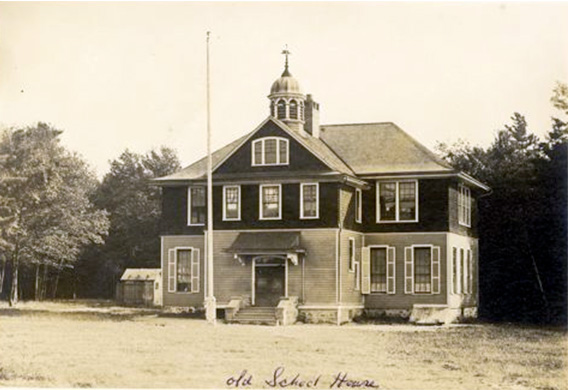
A modern school for Tobyhanna Township
On March 9, 1929, the president of the Parents Teachers Association, Curvin Miller and Eugene Bonsor, secretary, wrote a letter to township residents asking for “a new, remodeled and enlarged high school plant and a 6-6 plan.”
That plan defined an elementary school of six grades and a junior-senior high school of six grades. This vision was to provide students the opportunity for entrance into college, and to compete in the job market for opportunities from industry and businesses moving into the area. (To this point, education through grade 12 had to be obtained in Stroudsburg or Wilkes-Barre.)
Two choices were given to the residents for financing: a bond issue or direct taxes. The township approved a $60,000 bond issue, and the architectural firm of G.E. Brumbaugh was hired.

Construction began in the spring of 1929. During the year that it took to remodel the school, students met at the Salem United Church of Christ, while the high school students met in the old Bonsor home, the administration building at Lutherland.
Mr. Brumbaugh, the architect, explained his unique “design calls for an attractive building which embodies its architecture the motifs of several phases of Pennsylvania’s early history. To the left will be the old Connecticut style introduced to this territory by the Yankee immigrating here ‘round 1780. To the right we find the perhaps more familiar Early Pennsylvania lines with great, weathered hand split shingles, and at the center, of the group, that fine old simple stolid stone construction of the Moravians.”

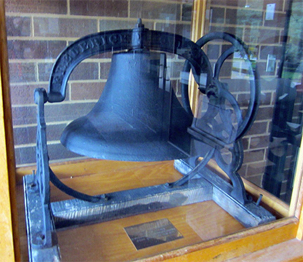
As happens, unanticipated expenses caused construction overruns when remodeling of the existing structure uncovered challenges. In the spirit of our community, several groups came together to raise the $10,000 cash needed.
The first class graduated from the new school in 1931. Melvin and Bessie Smith were among the graduates. C. Willis Dunlap was first a teacher and then principal from 1935 to 1956, earning $175 per month in his first year. He was subsequently appointed superintendent of the new Pocono Mountain Jointure. Jack Majer of Pocono Pines, a student in those years, recently was quoted as stating, “Mr. Dunlap was a peach of a guy!” Pupils living in the Pocono Summit area of Tobyhanna Township, who previously attended school in Coolbaugh Township, now reported to the new school.
Over the years the school became a center of community activities for meetings and events, and summer fireworks and community softball games.
Consolidation and disaster
In the 1950s, at the urging of the state, the new Pocono Mountain Jointure was formed. In 1962, a new junior-senior high school was built in Swiftwater, from which the first class graduated in 1962. The school complex in Pocono Lake then became the Tobyhanna Elementary Center.
Until the new jointure, high school students from Buck Township, Luzerne County (over the Lehigh River on Route 115 North) attended the higher grades in Blakeslee and later, Pocono Lake. Elementary students had their own school located in Buck Township.

On October 15, 1979, the original expanded structures of the Pocono Lake School, now known as the Tobyhanna Elementary Center, burned to the ground in a tremendous fire. It was reported that possible electrical deficiencies during repairs of remodeling contributed to this blaze, although conjecture seems to continue to present day.
The complex was replaced on the same site by a modern, full-service facility that serves the students and community today, housing grades K-5.
It has the highest capacity, 97 percent, of any elementary school in the Pocono Mountain School District. As this school has been an important part of the entire school system, the school board decided to replace the roof during the summer of 2012, and move back into the school the sixth grades students from its service area.

Today’s Pocono Mountain West complex returns to Tobyhanna Township
To further accommodate significant population growth, the Pocono Mountain School District opened the newly built Pocono Mountain West High School in 2002. Located on Route 940 east of Pocono Pines and west of Pocono Summit, it returned the high school to the township for the first time since the fire of 1979. Students formerly attended the Pocono Mountain High School in Swiftwater, now designated Pocono Mountain East High School.
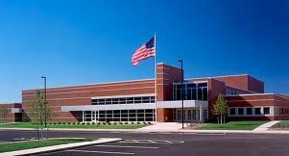

This complex is a full-service facility with a modern auditorium, swimming pool, and sports facilities. In 2010 the school served 1,509 students in grades 10 through 12, but the last few years the school population has stabilized.
Plans for the new Pocono Mountain West Junior High School continued under development, and in 2006 the doors opened for grades 8 and 9 in Tobyhanna Township, for the first time since 1979. Built next door to the West high school forming a school campus, it serves more than 1,000 students.
Memorable notes from the past
- During the later part of the 1800s into the 20th century, the schools in Monroe County fell under the administration of a county superintendent. It is not clear as to that position’s relationship with the local school districts, but history does offer some insight into the educational system of that period.
- For example, Professor B.F. Morey, county superintendent in 1876, reported that some students traveled four or five miles or more to reach their school. There were 19 school districts in the county, with 149 schools. Students attended school for five months a year.
- Professor H.L. Walter, county superintendent, reported in 1900 that the average teacher salary was $29.30 for men and $24.20 for women. He also reported that there were 20 school districts in the county, and that students attended school for seven months and one week.
- In 1925, Dr. J.M. Yetter, county superintendent, reported that there were 151 teachers in Monroe County in 1900, increasing to 187 teachers by 1924. In 1900 there were 4,850 students in Monroe County, with 152 in Tobyhanna Township. By 1924 there were 5,392 students in the county and 198 in Tobyhanna Township. He attributed the disproportionate increase in Tobyhanna Township as a result of the “growth of the ice and resort industries.” Pocono Lake High School was reported to have 15 students in grades 7-10, in 1924.
- Historically through the 19th and at least the first half of the 20th centuries, teacher’s wages were below the poverty line, as demonstrated by the salaries cited here. For teachers to afford the minimal standards of life they often took a second, third or even fourth job during the year, when these could be found. One example was Roscoe Transue, a local schoolteacher, who was in charge of renting boats and bathhouses for many years at Naomi Lake (Lake Naomi) in some of the years between 1904 and 1920.

Thurston Blakeslee operated two school buses for the Tobyhanna Elementary, and subsequently the Pocono Mountain Jointure for 35 years and was accident free, an accomplishment few drivers’ experience. He was known to be exceptionally strict with his passengers. Thurston and his wife operated the service station with a small grocery store in Blakeslee. On his homeward run he would stop there to allow students to get candy and ice cream. Thurston came from a family of long lifelines. After all, how many school bus drivers for the Pocono Mountain Schools could state that their grandfather was born when George Washington was president, in 1793? Thurston held that distinction!
Tidbits from Tobyhanna Twp. School Board meeting minutes, 1927 to 1938:
- Jan. 3, 1930: The problem of transporting Locust Ridge and Blakeslee students to Pocono Lake because of the destruction of the bridge over Pocono Lake was solved by asking parents to bring their children to the western edge of the bridge. The children would then walk across the footbridge and then proceed to school. (on a bus) A bus had fallen through the old bridge.
- April 11, 1930: Hugh A. Oakwood was elected supervising principal of Tobyhanna Township schools at $200 a month. He served one year. Dorothy Miller was elected teacher at Blakeslee at $110 per month.
- September 1930: Elmer Hay was appointed truant officer at $15 a month.
- April 20, 1931: Dorothy Bush was elected teacher at Blakeslee at $120 a month.
- March 11, 1935: If a lady teacher married, her contract would expire on the last teaching day of the month of the marriage.
- March 11, 1936: School was closed indefinitely because of scarlet fever, reopening on March 25.
- August 6, 1937: A motion was passed to sell the belfry bell of the Blakeslee School to the Wilkes-Barre YMCA camp at Blakeslee for $10.
Past school board directors
1840: Stephen Gould and John Nicket
1841: Samuel Bond and George Muir
1842: Robert Newell and Washington. Winters
1844: Thomas Woolshier and Peter Bouser
1845: Washington Winters and William Ebaugh
1846: Phillip Albert and Frederick P. Miller
1847: S.E. Eschenbach and Frederick Knecht
1848: Washington Sox and William Ebaugh
1849: Wellington Sox and Charles Hauser
1850: Garret Albertson and Abraham Butz
1851: W. Winters and W. Clack
1853: S.G. Eschenbach and Peter Merwine
1854: William Ebaugh and John White
1855: Hiram Blower and Jude Winters
1856: Frederick P. Miller and Peter Kinney
1857: Hiram Blower and Jude A. Winters
1858: S.G. Eschenbach and Jacob Blakeslee
1859: Peter L. Kinney and Samuel Hay
1860: Hiram Blower and Jude A. Winters
1861: Samuel Hay and S.G. Eschenbach
1862: Jacob Blakeslee and Peter L. Kinney
1863: Daniel Newell and Edward Bush
1864: S.G. Eschenbach and Samuel Hay
1865: S.G. Eschenbach and Samuel Hay
1866: Frederik P. Miller and William Bouser
1867: Edward Bush and Robert Warner
1868: S.G. Eschenbach and Jackson Stine
1869: Frederik P. Miller, Edward Shaler, S.G. Eschenbach and Isaac Stauffer
1870: Jackson Stine and Frederick P. Miller
1872: Jacob Blakeslee and William Shifter
1873: Isaac Stauffer and William Maclary
1874: Jacob Blakeslee and Robert Warner
1875: Thomas Winters and Peter Kinney
1876: Isaac Stauffer and Samuel Stiger
1877: Jacob Blakeslee and Robert Warner
1878: Peter Kinney and Samuel Hays
1879: Isaac Stauffer and George Wagner
1880: S.G. Eschenbach and Jacob Blakeslee
1881: Henry Wildrich and Peter L. Kinney
1882: Isaac Stauffer and Thomas Winters
1883: George Warner and Edward Hawk
1884: William Bouser, Jacob Blakeslee and Thomas Miller
1885: Isaac Stauffer and Thomas Miller
1886: George Wagner and Edward Hawk
1929-1938: The following served at various times:
Mabel Henning, Floyd Miller, Albert Deppner, C.A. Sensenbach, William Durland, Charles D. Stout, Clarence Majer, Daniel F. Starner, Adam Smith, Robert Warner and Frank Smith
SOURCES:
- Changing Times in the Poconos by E.M. Waygood, 1972,1976, and 1986 by Mary Waygood Brower
- History of Monroe County, Pennsylvania by Robert Brown Keller, 1927
- History of Wayne, Pike and Monroe Counties, Pennsylvania, by Alfred Matthews, 1886
- Lutherland: A Dream Fulfilled and Memories… by Ted Suttmeier, 2007
- Naomi: A Jewel of the Poconos from 1882 by Irene Miller Gross, 1972
- Pocono Pines…Then and Now by Frederick A. Lehrer, 2010, and additional contributions by Fred.
Additional thanks to Robert Selig, Jack Majer and Emily Carter, for their contributions.